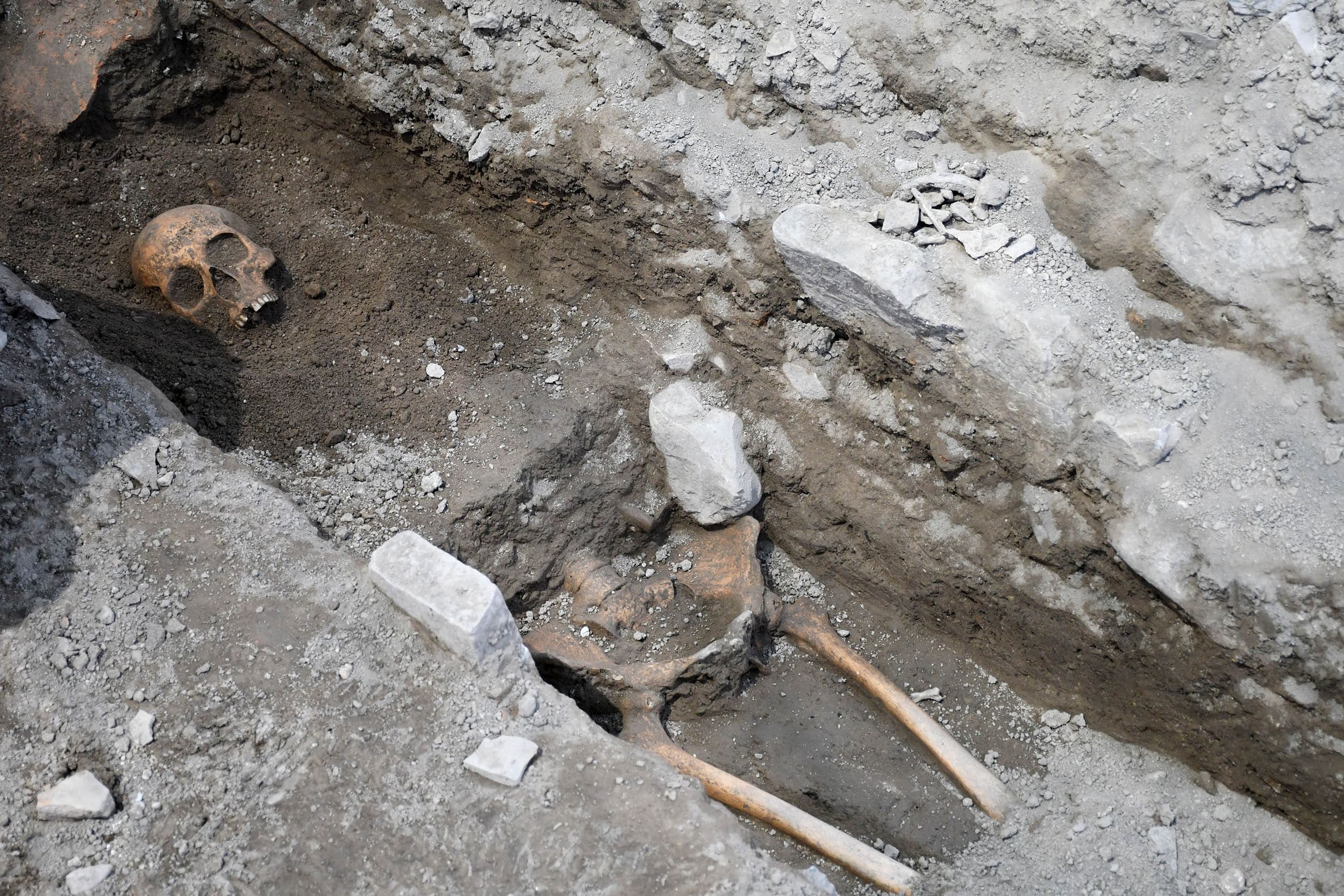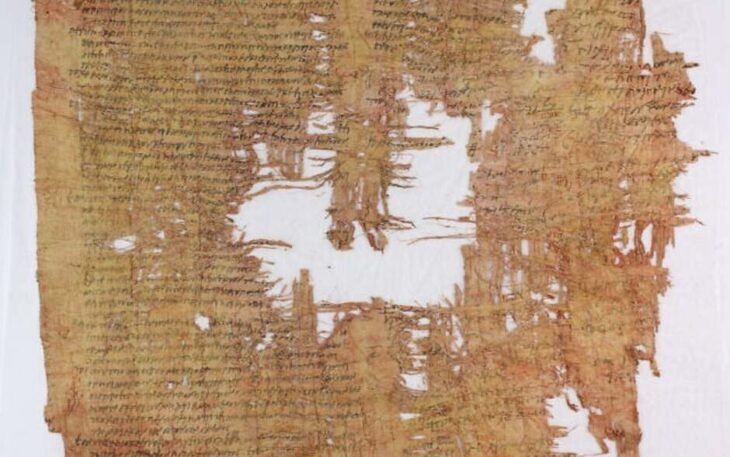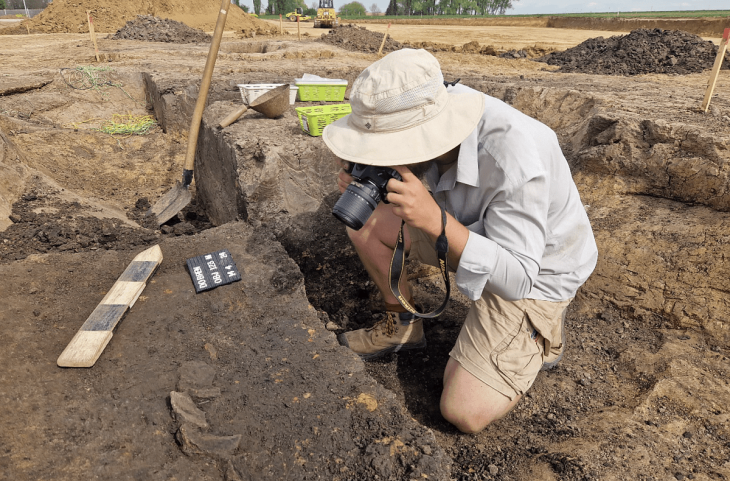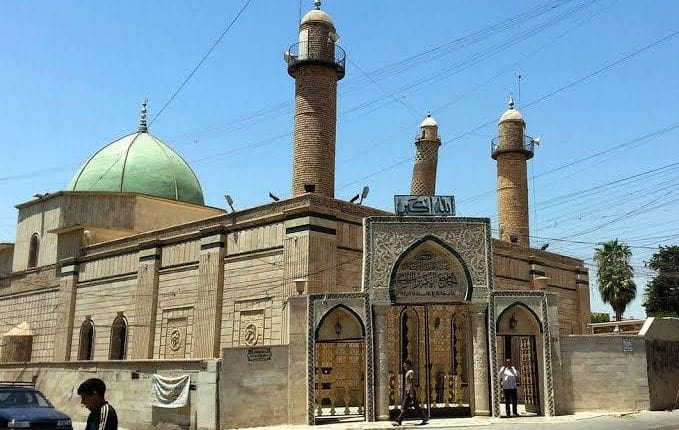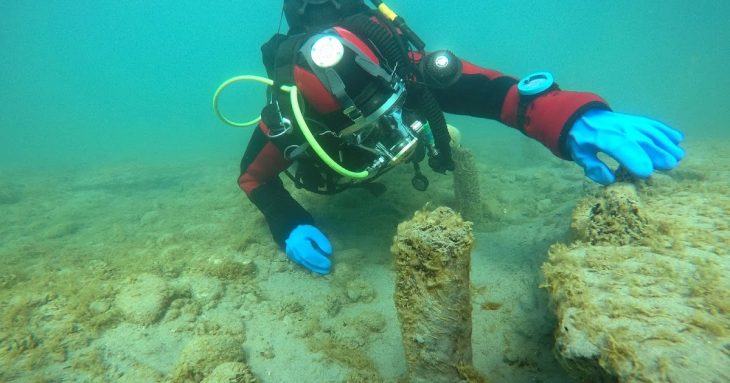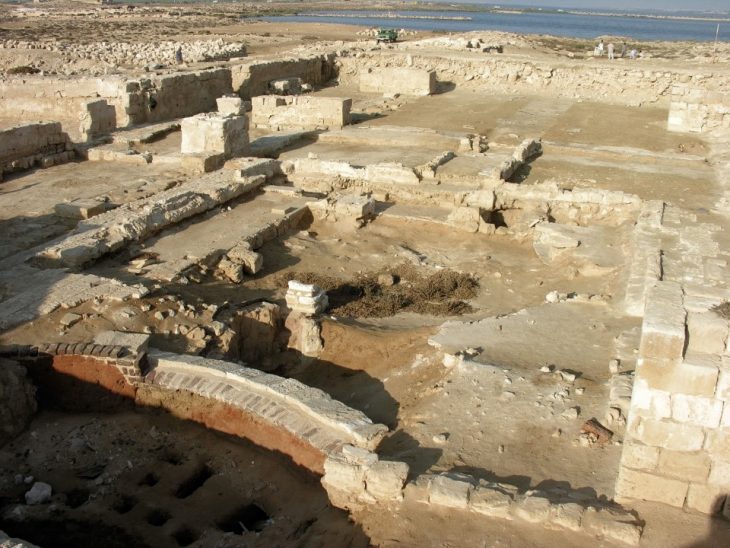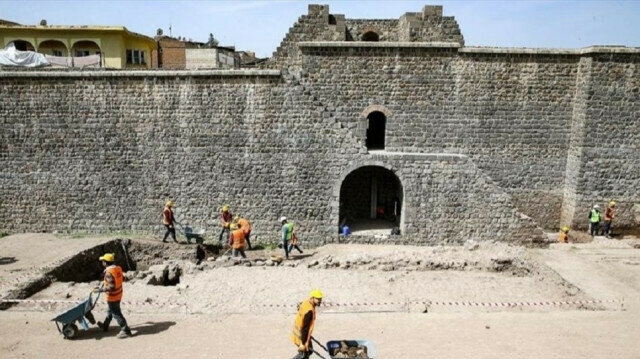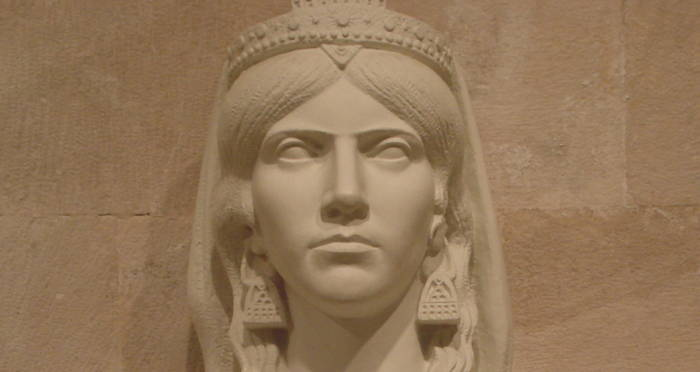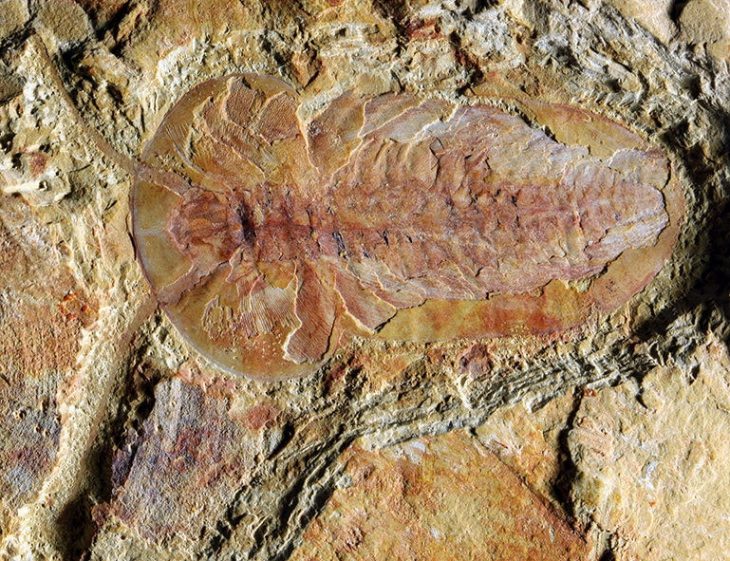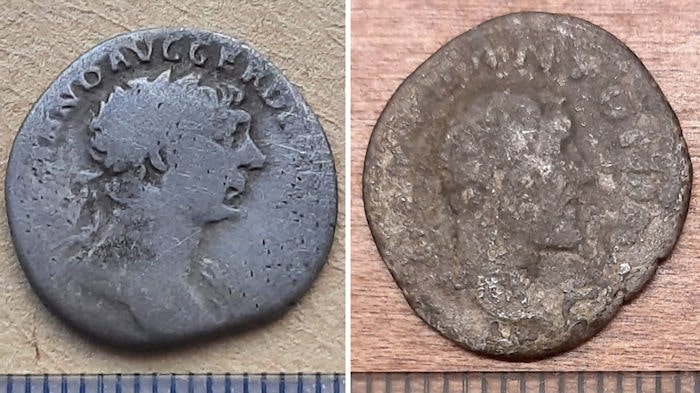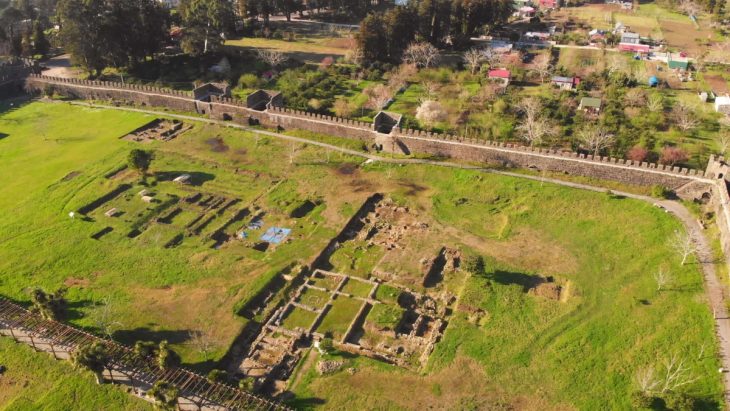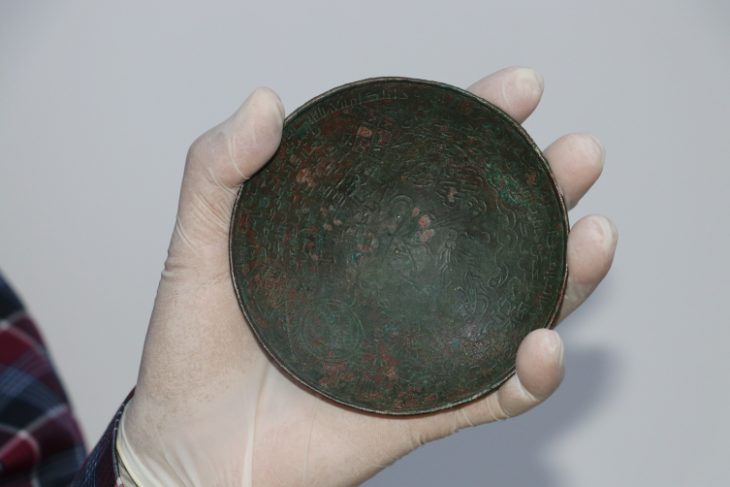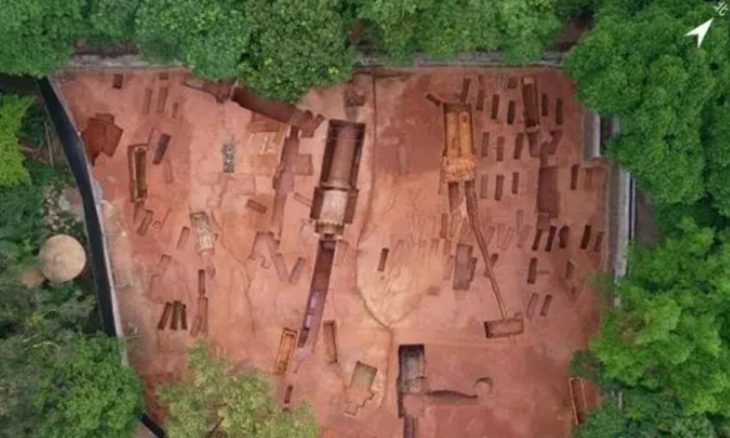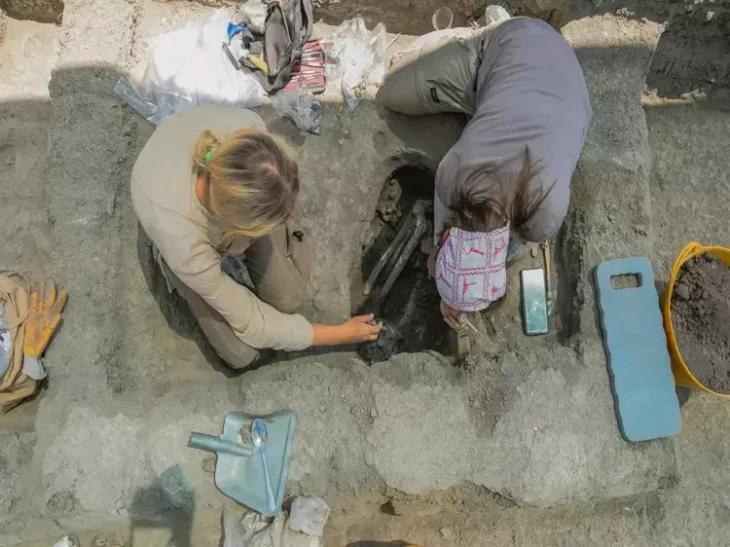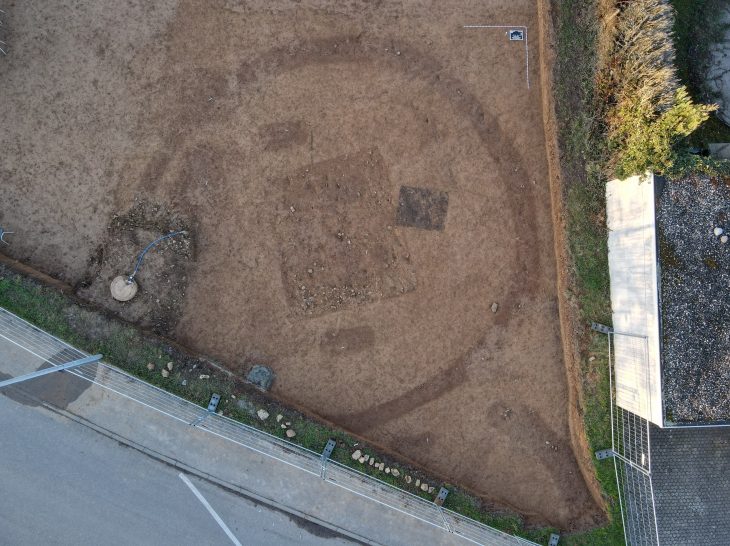At the historical Kadıkalesi archaeological site in Turkey’s western Aydin province’s Kuşadası district, a total of five skeletons thought to date back to the 13th century have been found this year.
The excavations at Kadıkalesi, which date back more than 5,000 years and were known as Annaea in the ancient period, have been meticulously maintained. The most notable discoveries of the most recent work on the site include five human skeletons, two of which belong to infants.
Aydın Archeology Museum Director Abdulbari Yıldız, about the graves found in April during the excavations of Kadıkalesi-Annaea Mound, which has been going on for 21 years, “We have determined that the skeletons in these five graves belonged to people of the Christian religion based on the posture of their skeletons and the style of their burial. Anthropological work on the graves continues. Since there was no settlement here from the 14th to the 20th century, we can see the graves intact. All of the skeletons we found this year was undamaged” he said.
Yıldız said that the team did not see any signs of trauma on the skeletons that can be linked to their deaths. “There is only a fracture in the skull of a child,” he said. “I think it is a fracture from a fall. We found these graves near the church of the site. Since the church is a sacred place, people wanted to place their graves close to it even if this place is not a cemetery.” He added that necklaces and bracelets with cross motifs were also found in the graves.
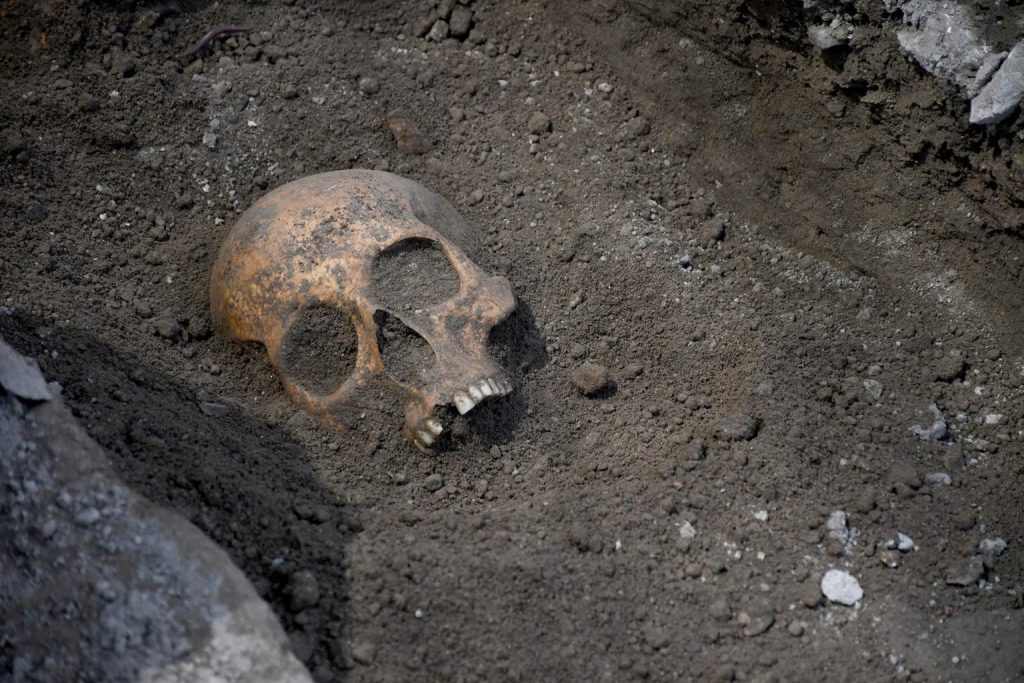
The history of Kadıkalesi-Annaea -Höyük, which has been excavated with the support of Kuşadası Municipality, dates back to the ‘Prehistoric’ (prehistoric) period. Painted pots and pots, stone axes, and various earthenware pots have been found in the excavations so far. In Anaia-Tumulus, where sculptures belonging to the Hittite period were also unearthed, glazed ceramics from the 12th and 13th centuries AD, jewelry, saint’s icon, lead seal impressions and 8-century tile fragments with animal footprints from that period are among the finds.
📣 Our WhatsApp channel is now LIVE! Stay up-to-date with the latest news and updates, just click here to follow us on WhatsApp and never miss a thing!!
Located 8 km from the city center of the Kuşadası district of Aydın province, the Annaea mound; is an important settlement because it was established at a point to control the Samos Strait, which was strategically important in its period.
The artifacts found in the Annaea excavation area are exhibited in the Aydın Museum.
Source: DHA

